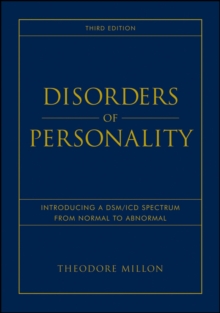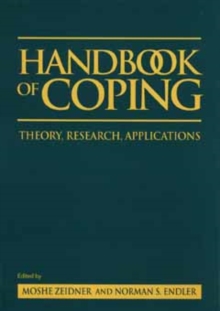
The Rorschach, Assessment of Children and Adolescents Hardback
by John E., Jr. Exner, Irving B. Weiner
Part of the Wiley Series on Personality Processes series
Hardback
Description
Volume 3: Assessment of Children and Adolescents provides practical, authoritative guidance in the Rorschach assessment of personality functioning in young people and in the identification of psychological disorders and developmental difficulties.
Supported by conceptual formulations and research evidence, this text helps clinical and counseling psychologists deepen their understanding of the Rorschach and sharpen their skill in administering it.
The Second Edition includes new material on the issue of projection, revised normative data on young people age 5 to 16, and a demonstration of the recently developed Comprehensive System "search strategy" for interpreting children's and adolescents' records.
New to this edition also are sections on interpreting the Schizophrenia Index (SCZI), the Depression Index (DEPI), the Coping Deficit Index (CDI), and the Hypervigilence Index (HVI), and a discussion of bipolar disorder and the dynamic interplay of mania and depression.
Subsequent chapters present new formulations of faltering personality development and antisocial behavior and new information on the assessment of learning disabilities and attention deficit hyperactivity disorder (ADHD).
A final chapter offers new material on Rorschach-based recommendations in child custody disputes.
Throughout the text, explanatory concepts and empirical data are used to link features of normal and abnormal development with response patterns on the Rorschach, which are then linked to concrete criteria for diagnosis and treatment planning.
The authors provide fourteen case studies to demonstrate clearly the application of these principles in clinical practice.
Based on a system that has, over time, demonstrated both its validity and reliability, this book is an essential resource for all psychologists practicing, teaching, supervising, or researching personality assessment of children and adolescents.
Information
-
Available to Order - This title is available to order, with delivery expected within 2 weeks
- Format:Hardback
- Pages:448 pages
- Publisher:John Wiley & Sons Inc
- Publication Date:29/11/1994
- Category:
- ISBN:9780471559276
Information
-
Available to Order - This title is available to order, with delivery expected within 2 weeks
- Format:Hardback
- Pages:448 pages
- Publisher:John Wiley & Sons Inc
- Publication Date:29/11/1994
- Category:
- ISBN:9780471559276










